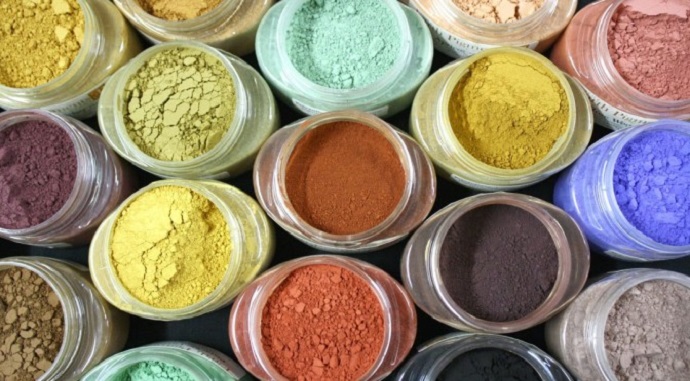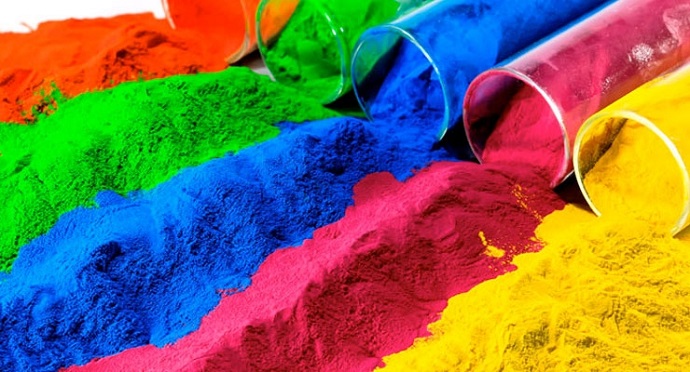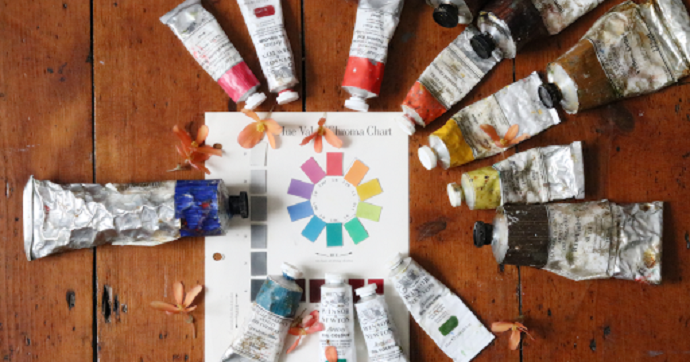Up until the early 19th century, artists had to make the paints they used for their art. There was always a knowledge of the used materials and their interactions and limitations. Today, there are ready paints available in almost every art supply store, but an overall understanding of pigment for paint and how paint is made is one of the most important steps for improving your artistic game. The heart of every drop of paint is a pigment.

Source:chestofcolors.com
What is a Pigment in Paint?
Pigments are the compounds added to materials to give them colour. They are finely ground natural or synthetic, insoluble particles used to impart colour when added to paints and coatings formulations. Almost all types of solvent or water-based printing inks have pigments as one of the main ingredients that provide colour when you take out a print on paper, flex or plastic sheet.
When it comes to paints, pigments are used in almost all segments, from protective coating paints to vast applications in decorative and architectural coatings. Other application of paint includes emulsion paints, resin and oil-based paints, aqueous-based paints like lime, automotive finishes, protective paints, powder coatings and more.
Pigments often make up a large per cent of original paint blends and products. They provide a solid base for binder reactions and powerful coating for surfaces. Depending on the demands of the particular application, you can choose pigment for paint that is resistant to light, weathering, heat and chemicals.
Analysing and understanding the pigments used in paintings is the key to successful artwork restoration and preservation. Pigment conservation is a focus for many modern researchers who identify and preserve artworks. Eosin Y was a pigment that was favoured by many artists, especially by Vincent van Gogh. Initially, a vibrant red, when exposed to light it gradually turns white as UV radiation excites the pigment particles and leads to the production of OH radicals. This is just an example of how knowing paint pigments can help art historians to better conserve art.
While understanding pigments can help protect the past, it also plays a vital role in creating the colours of the future. Pigments are responsible for the colour part of the paint and are the reason for all things colourful. Scientists keep finding ways to make new and more extreme colours that change our world in many different ways and alter the way we perceive and interact with it.

Source:coatingsworld.com
Different Types of Pigments
Paint pigments narrow down to two basic classes – organic and inorganic. Organic pigments are synthesized in labs, with greater control over their manufacture. They include carbon compounds and their levels of toxicity are low, so they’re not an environmental hazard. Organic pigments are responsible for a broad number of colours across commercial products, from paints, plastics, synthetic fibres, inks industry and recent high-tech applications. Inorganic pigments, on the other hand, occur naturally and have a simple chemical structure. They’re manufactured through a simple process which usually involves washing, drying, powdering and combining into a formulation.
The main difference between organic and inorganic pigments is that the inorganic get more easily dispersed in the resin. Organic pigments don’t disperse easily and form agglomerates, which are clumps of pigment particles. Most organic pigments show better transparency as dispersion improves, while in the case of inorganic pigments, opacity is improved by good dispersion.
Also, there are functional pigments that impart a desired property to the coating, like corrosion inhibition and special effect pigments that create optical effects, like a metallic finish and diverse colour perceptions depending on the angle.

Source:learning-to-see.co.uk
How to Choose Pigment
Performance of a pigment can be measured by its colour and colour strength, heat resistance, light fastness, weather stability, insolubility, opacity, transparency and chemical stability. But how do you know which pigments you need to mix a colour you want? There are so many different colours, from different manufacturers and they all behave differently in mixes.
Choosing the right pigments is not an easy task, but it can be really fun. Experimenting with different pigments is a great way to discover new colour mixtures and explore all the ways you can play with your artwork. Focus on your colours and keep notes if any particular hues have made a strong presence. Making the right pigment choices can lead to an expensive collection in a very short time. Learning to maximise your options can save you money and give you a greater understanding of the colour mixing possibilities.
The key is to choose pigments that play well together and are clean mixers. For this, it’s a good idea to use organic pigments as they’re known for their ability to allow light to pass through them. You can begin with a primary red, blue and yellow triad. All of them are deeply saturated and intense pigments with tint strength. A tint is a colour that comes as a result of adding white to the original colour. When an artist documents their palette, it’s important to include the manufacturing date of the paint, the maker and any pigment formation included.
You can opt for dry powder pigments as they open up many opportunities for creativity. A pigment isn’t a uniform substance when dry, so using a dispersing agent can help your pigment dissolve easily into the binder. When everything comes together, it will keep your paint from clumping up and provide a nice, smooth surface.
There are many dispersing agents’ options that work for different paint types. When working with dry paint pigment, you can apply a primer to your surface and then apply your pigment as you like. You can use a matte sealer to secure it and then add layers. This is a great method for changing the colour and the texture of your painting.
Always keep in mind that dry paint pigments give off dust, so wearing a mask while working with them is a good idea. Choose products with non-toxic substances to ease your mind while creating your art.












